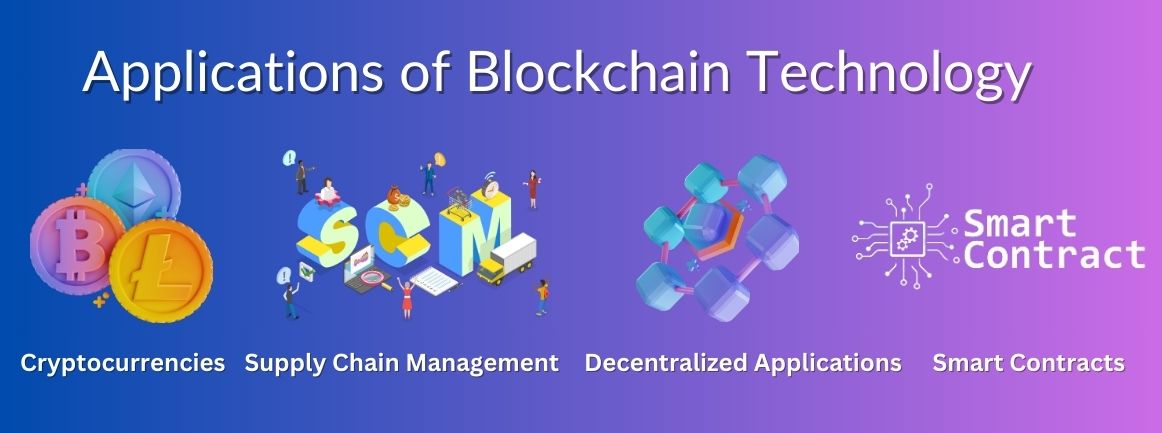The Evolution and Impact of Blockchain Technology

Blockchain technology has emerged as a revolutionary force, transforming industries and redefining how we think about data security, transparency, and trust. Initially popularized by cryptocurrencies like Bitcoin, blockchain’s potential extends far beyond digital currency. This blog will explore the evolution of blockchain technology, its core principles, and its transformative impact across various sectors.
What is Blockchain Technology?
At its core, blockchain is a decentralized ledger that records transactions across a network of computers. Each transaction, or “block,” is securely linked to the previous one, forming a “chain.” This structure ensures that data, once recorded, cannot be altered retroactively without altering all subsequent blocks, making the blockchain inherently secure and tamper-proof.
Key Principles of Blockchain
Decentralization: Unlike traditional databases controlled by a central authority, blockchain operates on a peer-to-peer network. Every participant (node) has a copy of the entire blockchain, ensuring transparency and reducing the risk of centralized control or failure.
Transparency: All transactions are visible to every participant in the network. This transparency builds trust among users, as they can independently verify and audit transactions.
Security: Blockchain uses cryptographic techniques to secure data. Each block contains a unique code called a hash, along with the hash of the previous block, creating a chain of trust. Any attempt to alter a block would require altering all subsequent blocks, which is computationally impractical.
Immutability: Once recorded, data on the blockchain cannot be changed. This immutability ensures the integrity of the information and prevents fraud.

The Evolution of Blockchain
Blockchain 1.0 – Cryptocurrencies: The first generation of blockchain technology, known as Blockchain 1.0, was primarily focused on cryptocurrencies. Bitcoin, created by the pseudonymous Satoshi Nakamoto in 2008, was the first and most prominent application. It introduced the world to a decentralized digital currency that operates without intermediaries like banks.
Blockchain 2.0 – Smart Contracts: The second generation, Blockchain 2.0, expanded the capabilities of blockchain with the introduction of smart contracts. Ethereum, launched in 2015 by Vitalik Buterin, is the most notable example. Smart contracts are self-executing contracts with the terms directly written into code. They automatically execute and enforce agreements without the need for intermediaries.
Blockchain 3.0 – Decentralized Applications (dApps): Blockchain 3.0 focuses on decentralized applications (dApps) and aims to address scalability, interoperability, and sustainability issues. Platforms like Polkadot and Cardano are working towards creating more scalable and efficient blockchain ecosystems that can support a wide range of applications, from finance to supply chain management.

Applications of Blockchain Technology
Financial Services:
Financial Services: Blockchain is revolutionizing the financial sector by enabling faster, cheaper, and more secure transactions. It facilitates cross-border payments, reduces fraud, and provides transparent auditing trails. Decentralized finance (DeFi) platforms are leveraging blockchain to offer lending, borrowing, and trading services without traditional intermediaries.
Supply Chain Management: Blockchain enhances supply chain transparency by providing real-time tracking of goods from origin to destination. It helps in verifying the authenticity of products, reducing counterfeiting, and ensuring ethical sourcing. Companies like IBM and Walmart are already implementing blockchain solutions to improve supply chain efficiency.
Healthcare: In healthcare, blockchain ensures secure and interoperable patient records. It allows for accurate and tamper-proof tracking of medical data, reducing errors and improving patient care. Blockchain also facilitates clinical trials by providing transparent and immutable records of research data.
Voting Systems: Blockchain offers a secure and transparent solution for voting systems. It ensures the integrity of the voting process by preventing tampering and providing a verifiable audit trail. Countries and organizations are exploring blockchain-based voting to enhance trust in electoral processes.
Real Estate: In real estate, blockchain simplifies property transactions by providing a transparent and immutable ledger of ownership. It reduces the need for intermediaries, speeds up transactions, and ensures the authenticity of property titles.
Challenges and Future Outlook
Despite its potential, blockchain technology faces several challenges, including scalability, regulatory uncertainty, and energy consumption. However, ongoing research and development are addressing these issues, paving the way for wider adoption.
The future of blockchain is promising, with continuous advancements and increasing integration into various industries. As technology evolves, we can expect blockchain to play a crucial role in shaping a more transparent, secure, and decentralized world.

Conclusion
Blockchain technology is more than just a buzzword; it is a transformative force with the potential to revolutionize various sectors. From enhancing financial services to ensuring supply chain transparency and securing healthcare data, blockchain’s impact is far-reaching. As we continue to explore its possibilities and overcome its challenges, blockchain will undoubtedly play a pivotal role in the future of technology and society.
